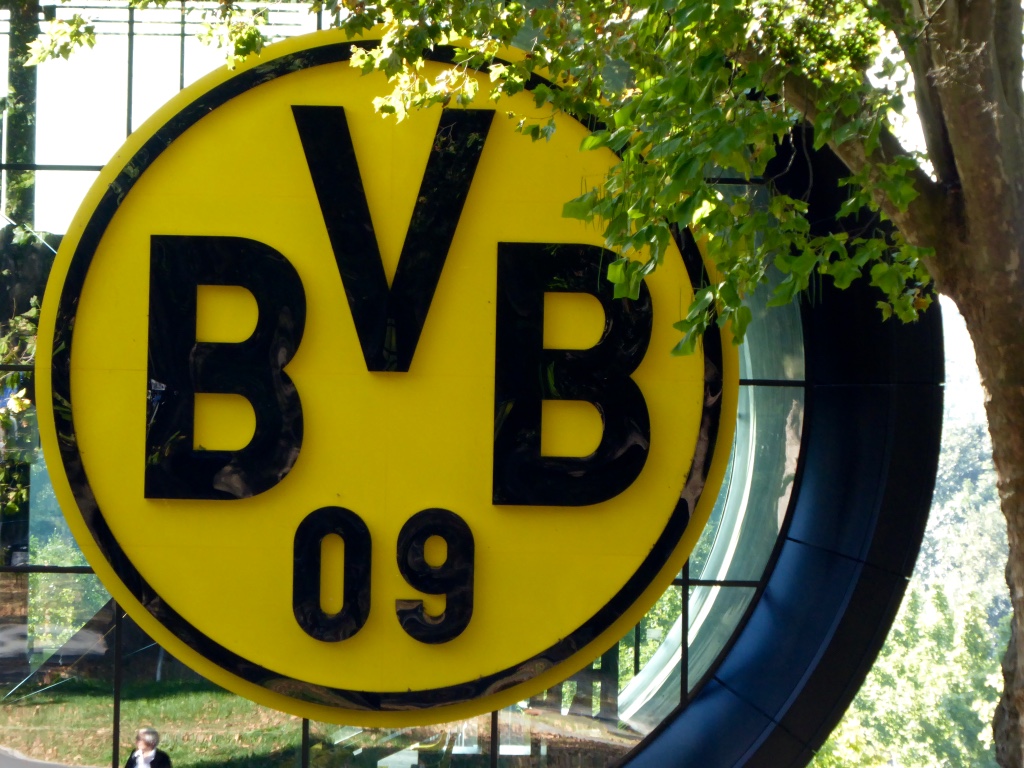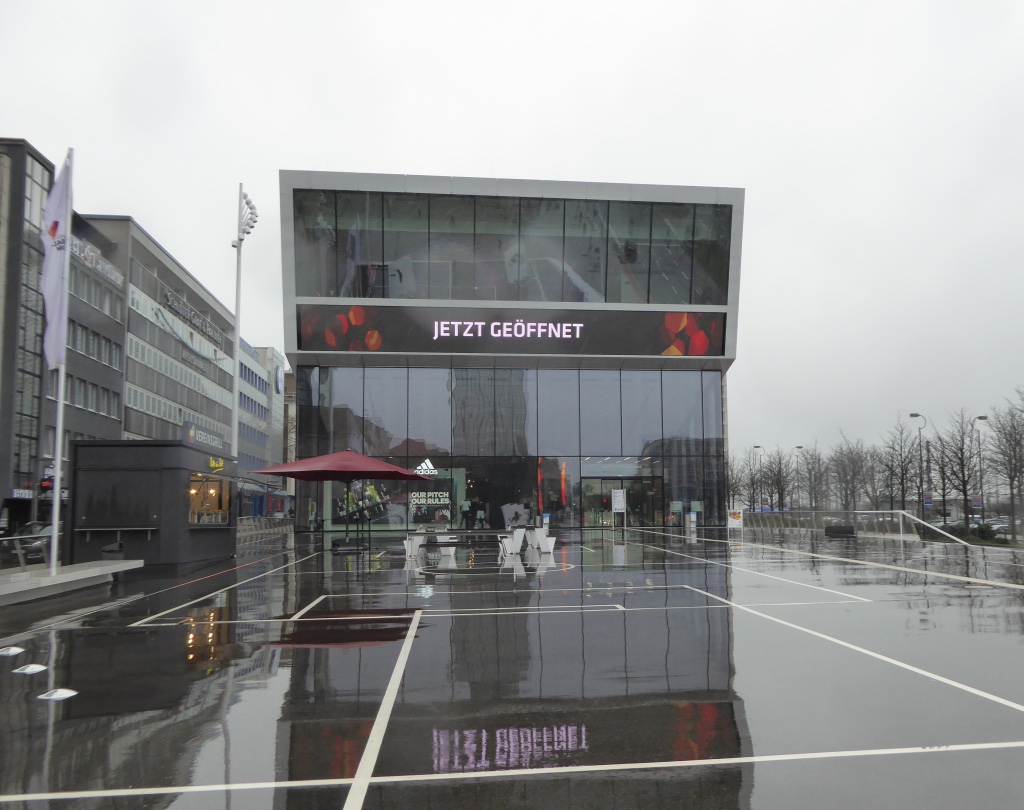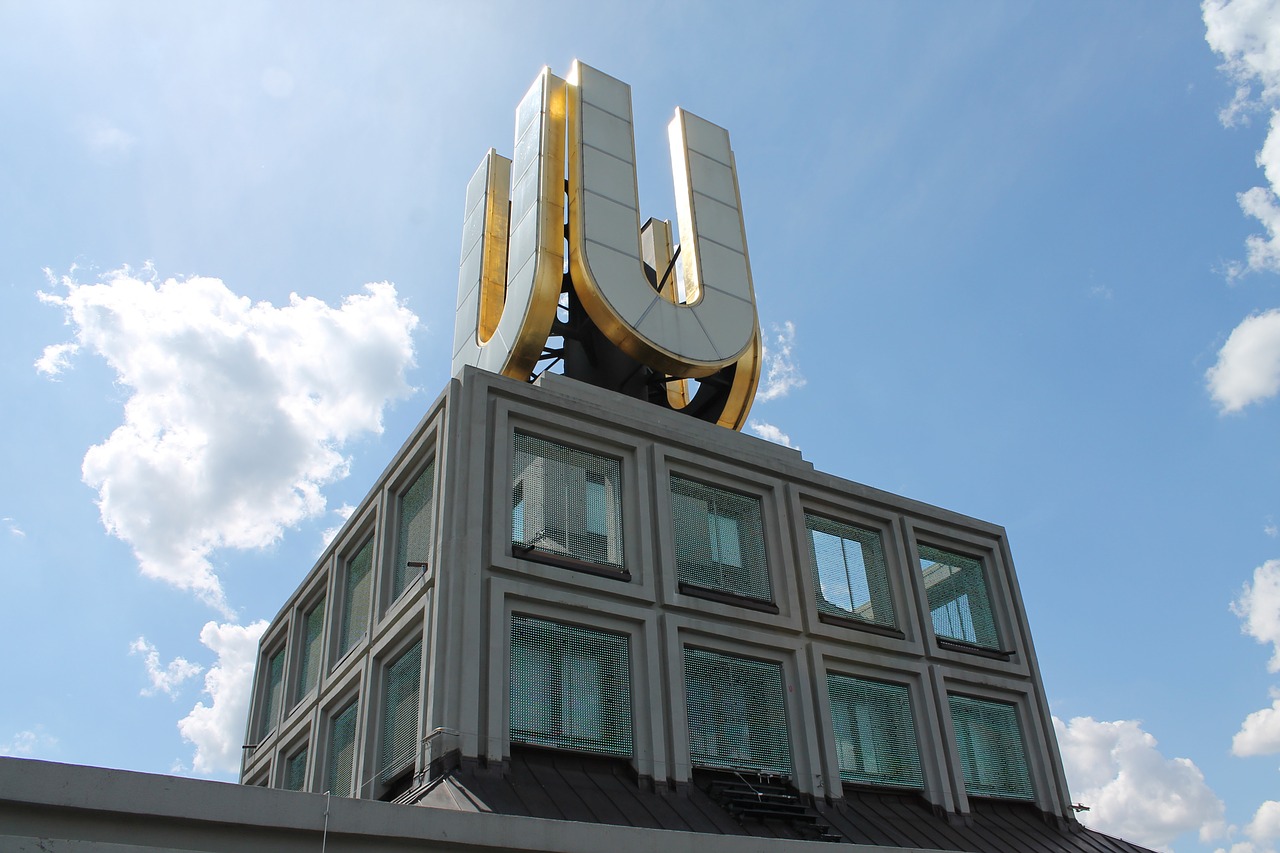Borussia Dortmund

Dortmund has a population of 589,283, making it the largest city in the region and the eighth largest in Germany. Until the 1970s it was famous for coal, steel – and beer. The city now focusses on high tech industries such as robotics, biomedicine and micro systems. It is a vibrant, multicultural place with shops, bars, restaurants and parks
Dortmund is also the home of Ballspiel Verein Borussia 09 e.V. Dortmund – also known as Borussia Dortmund, or simply BVB.
According for Forbes Borussia Dortmund is the 11th most valuable football club in the world. It has well over 100,000 members, making it one also one of the most supported clubs in the world. With an average of over 80,000 the club has the highest attendance in the Bundesliga. There are 55,000 season ticket holders and a waiting list of 10,000
Dortmund is still owned and heavily influenced by its fans. It could make more money by replacing some places for fans with hospitality boxes and by raising prices – but the club refuses to do this. Instead, it is determined to live within it means, to bring out the best in the players they have rather than buying success on the on the international transfer market. It has invested heavily in its academy which regularly produces high quality players.
In recent years Dortmund have become renowned for their playing style which is characterised by passion, hard work, technical quality, high-pressing quick transition from defence to attack. They have been the only club to come close to challenging Bayern Munich. In 2015/16 they remained contenders until the second to last game of the season. Up to 1000 English fans take budget airline flights each match day to Dortmund to see a game the Signal Iduna Park. And come back buzzing from the experience. If you get the chance, go and experience for yourself the noise and passion of the yellow wall of fans standing behind the home goal.
Stadium
They say that the Signal Iduna Park is one of the most beautiful football stadiums in the world. It also one of the largest, with a capacity of 81,358. The Südkurve, which has places for 25,000 fans is the largest standing section of any ground in Germany.
You can’t use cash inside the stadium. Instead, you need to get hold of a Stadiondeckel from one of the many operatives inside the stadium. You tell them how much cash you want to load onto it and then use it like a debit card whenever you buy anything to eat or drink. After the game you can get back any money you have not yet spent.
There is free wi-fi in the stadium and if you download the BVB-App you can get stories, background information and live data before, during and after the game.
Tickets
Tickets for all BVB games sell out very quickly, so you should definitely arrange your tickets well before you set off. You can get tickets online and use Print@Home to print your ticket before you set off. The club also offers a really attractive package which includes a ticket and two nights in a hotel for 209.00 euros per person.
A standing place – if you can get one – will cost you 16.70 euros. Prices for seats start at 31.20 euros. There might be a 20% surcharge for games against Bayern Munich and – of course – FC Schalke 04.
Directions
The stadium is about 3 kilometres from the city centre, but it’s easy to get there by public transport. It has its own station where local trains arrive every 15 minutes (look out for RB52 and RB59). Or you can take the underground (U45) to the stop ‘Westfalenhallen’ and walk the last five minutes.
Where to stay in Dortmund
Five things to do in Dortmund
This brand new museum is right outside the main station and has to be the top sight for any football fan. Using the most up-to-date technology it tells you the story of football in Germany, from its beginnings towards the end of the 19th century right up to the present. The 15 euro entrance fee is worth every cent. The museum is open every day.
If you are not convinced, take a look at my blogpost.
This huge building used to be a brewery and has long been one of the key landmarks in Dortmund.
It is now used for art exhibitions. If you go to the top you get the most spectacular view of the city and its surroundings.
3. Take an open top double-decker bus for a tour of the city.
Buses equipped with audio guides in English leave the main station on Wednesday, Friday, Saturday and Sunday at 10.20, 12.20 and 14.40. The full tour lasts about 100 minutes and will take you to all the main sights in Dortmund. A ticket will cost you 15.00 euros.
4. Go to the Borusseum.
BVB has its own museum at the Signal Iduna Park. The virtual tour on the club’s website will give you an idea of what to expect. It’s open every day – even match days – and it will cost you 6 euros to get it. While you are there, you might also join one of the tours of the stadium.
Dortmund is famous for its beer and this museum will tell you everything you need to know about how it is made. It is open every day except Monday and it will cost you 2.50 euros to get in.
For even more ideas about things to do in Dortmund you can download a brochure from the tourist information office.


Borussia Dortmund – A short history
A noisy birth
The story of BVB Borussia Dortmund has a very dramatic beginning.
On 19 December 1909 40 members of a catholic youth group got together in a restaurant (zum Wildschutz) in Dortmund. They were all footballers and they were fed up with being regarded as second class club members by the chaplain Hubert Dewald and wanted to form their own football club.
The chaplain and some of his followers tried to force their way into the meeting. Although they were forcibly kept at bay, they remained noisily outside. Some of the ‘rebels’ buckled under this intimidation and left, but about 18 remained inside the restaurant to form their new club.
They decided to call themselves “Ballspiel-Verein Borussia 1909.”
“Ballspiel-Verein” means “ball sports club”. ‘Borussia’ is Latin for ‘Prussia’. This was the region which had driven German unification in the previous century. It was also Dortmund’s region. Many organisations used this word in their name to express local identity and patriotic pride. Our fledgling football club chose this word for a more mundane reason. It was the name of the local brewery.
They agreed to play in blue and white striped shirts with a red sash and black shorts (the modern colours of black and yellow were adopted in 1913) and applied to join the body which governed football in the region – West German Football Association. They would play their games at the Weisse Wiese and for the next two decades the club played in local leagues.
BVB and National Socialists
When the Nazis game to power in 1933 they reorganised all sporting bodies to bring them in line with the regime’s ideology. BVB was placed in the Gauliga Westfalen where it enjoyed modest success, but the team which dominated German football throughout the 1930s and 1940s was, of course, close neighbours Chapter Four – FC Schalke 04 from Gelsenkirchen. This is when the intense rivalry of the Revierderby began.
BVB was one of the few football clubs which did not comply fully with the new system. The club president refused to join the Nazi party and was replaced, and some members used the club’s resources were used secretly to produce anti-Nazi materials. They were executed towards the end of the war.
National success
After the war the victorious allies initially dissolved most sporting organisations – including BVB Borussia – in an attempt to force the Germans to make a break with their recent past. After unsuccessful attempts to force a merger with two other local clubs, Ballspiel-Verein Borussia – BVB joined the newly formed Oberliga West in 1946. This was the strongest regional league in Germany and its clubs dominated national football for the next two decades. It was in this league that Borussia was to enjoy its first successes and establish itself as a national footballing force. In 1949 it reached the national final, losing 2-3 to Stuttgart after extra time. In 1956 a 4-2 victory over Karlsuher FC secured the club’s first national title. This was followed in 1957 by a second national title when the club beat Hamburger SV 4-1. The Borussen were runners-up again in 1961 and champions for a third time in 1963.
Into the Bundesliga
This success ensured Dortmund was included in the Bundesliga when it was formed in 1963. Indeed, a Dortmund player – Friedhelm Konietzka – scored the first ever Bundesliga goal.
In 1965 the club won the DFB Cup and the following year beat Liverpool 2-1 to win the European Cup Winners’ Cup.
Financial worries
The next two decades were much less successful years. BVB was relegated in 1972 and although it regained its top tier status four years later the club was plagues by financial problems throughout the 1970s and most of the 1980s. A second relegation was very narrowly avoided in 1986.
Success returns
Success began to return towards the end of the 1980s. A 4-1 victory over Werder Bremen ensured they won the cup for a second time, and they beat Bayern Munich 4-3 later the same year to win the German Supercup.
The 1990s were hugely successful years for BVB. They ended the 1991/92 season in second place and were runners up in the UEFA CUP the following year, losing 6-1 on aggregate to Juventus. The 25 million DM prize money enabled the club to sign a number of top players who would bring them further successes throughout the decade.
They were Bundesliga champions and Supercup winners in 1995 and 1996.
In 1997 they defeated Zinedine Zidane’s Juventus 3-1 to win the 1997 Champions League Final.
Later the same year they then beat Brazlilian club Cruzeiro 2-0 to win the Intercontinental Cup.
BVB’s successful run continued into the next decade. In 2001 BVB became Germany’s first – and so far only – plc. Initially this decision worked out well. It earned the club a nice windfall top spend on new players which in turn seemed to lead to success on the pitch.
In 2002 they were UEFA Cup runners up and they won the Bundesliga for a third time the same year.
Near disaster
Unfortunately, bad times were to follow soon after. The pressure to maintain CL status, and the extra money burned holes in pockets and the club started to spend recklessly. The club accumulated huge debts
The first crisis point was reached in 2003 when the club could not even pay its own players and was only saved from bankruptcy by a 2 million euro loan from Bayern Munich. It also had to sell its most valuable asses – the Westfalen Stadion.
In 2005 the club nearly went out of business for a second time. By failing to qualify for the 2004 and 2005 Champions League the club missed out twice on the lucrative TV money that flows from success in this tournament. With unrest in the dressing room, unstable leadership, falling share prices, deteriorating form on then pitch, the constant threat of relegation – Dortmund was a club in crisis.
This time part of the rescue package included a 20% pay cut for players.
The one ray of light for fans in this dark period was the fact that Dortmund reached the final of the BFB Cup in 2008. They lost 2-1 to Bayern Munich, but because Bayern had won the league and already qualified for the following year’s Champions League competition, the runners up position also secured the Borussen a place.
A new philosophy
Seen in retrospect, this very difficult period has helped to make BVB the club it is today. Having suffered the almost fatal effect of financial mismanagement the club emerged with a clear philosophy.
- Maximum sporting success but we will never achieved through debt.
- Honest effort and real, intense football
- Reliance on younger local players and products of the academy
- Develop the skills of existing players
- Invest heavily in training facilities
The Klopp years
In May 2008 Jürgen Klopp was appointed as manager. He was hugely instrumental in fostering the new Dortmund philosophy.
U nder Klopp’s inspiring and innovative leadership the passion, commitment and confidence returned to BVB’s play. Indeed his high energy, all action approach to football took the the world of football by storm. He built his tactics around strength,, stamina, hard work, technical skill and a form of counter attack called ‘gegenpressing’. This means that when you lose the ball, instead of dropping off to reform you press forward and apply immediate pressure to get the ball back. In Klopp’s teams defence was turned quickly into attack, every minute of a game was played as if they were chasing a late equaliser.
The result was an inspiring style of football that enthused not just hardened BVB fans, but the entire footballing world, and which became synonymous with brand BVB. Indeed this swashbuckling approach, now imitated by other clubs is what attracts many outsiders to the Bundesliga.
A fifth place finish in 2009/10 secured a place in the Europa League.
The following season Dortmund were leading the league by the winter break and finished the season as champions. – Youngest bundesliga team ever
One year later Dortmund successfully defended their title, set a record for the number of points accumulated in a season (81) and won the DFB Cup.
In 2012/13 Dortmund finished second and reached the final of the Champions League, losing 2-1 to Bayern Munich in the first ever all-German final.
A new football superpower had emerged to challenge the dominance of Bayern Munich.
The following year was marred by injuries to key players and the depleted Dortmund was not quite able to maintain its run of success. Nevertheless, finishing second in the Bundesliga and losing the DFB final to Bayern Munich is a record the fans of most clubs would envy.
2014/15 began well enough for BVB with a 2-0 win over Bayern Munich in the DFB Supercup. But performances were hugely disappointing and defeat followed defeat. On several occasion Dortmund found itself in the relegation zone and in April Klopp announced his intention to leave at the end of the season. His tenure at BVB ended happily. The club rose to seventh in the league, qualified for the 2015/16 Europa League and reached the DFB Cup final.
After Klopp
Klopp was replaced by Thomas Tuchel at the end of the 2014/15 season.
Tuchel kept the best of the Klopp approach. BVB still played a high-intensity game, but the team was now more patient and there was more focus on organisation and defence. Tuchel made excellent use of positional play to develop numerical superiority in key areas. This gave BVB the edge in many games. As more and more opponents used the Gegenpressing tactics of his predecessor, Tuchel’sastutee positional play enabled BVB to exploit gaps wherever they appeared. He was also a brilliant motivator. He made good players even better.
A 4:0 thrashing of Borussia Mönchengladbach marked the beginning of a remarkable first season for Tuchel. BVB chased Bayern right up to the second to last game of the season and ended 18 points ahead of their nearest rival. In any other season they would have won enough points to have won the Bundesliga comfortably.
Tuchel ensured the club maintained momentum the following season, finishing second in the league and winning the club. Unfortunately, personal differences between coach and CEO Hans-Joachim Watzke led to Tuchel’s dismissal three days after the cup final. He was replaced by Ajax Amsterdam boss Peter Bosz.
